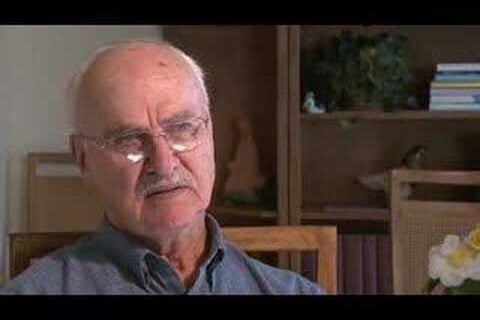VIDEO & ARTICLE
In trials, the most effective Alzheimer’s treatment so far is IVIG. At $50,000 per year, learn how scientists hope to bring down costs.
Immune globulin replacement, or IVIG for short, performed remarkably in a recent Alzheimer’s trial. Under the brand-name of Gammagard, IVIG halted Alzheimer’s in some patients for 3 consecutive years. See more about the trial in the following video, then continue below for more on learning how it works and lowering its cost.
Immune globulin replacement began decades ago as a treatment for patients who could not make their own protective antibodies, but has proven to have much broader benefits than originally expected.
With new uses regularly being discovered for this limited and expensive resource, including as a potential treatment for Alzheimer’s disease, now is the time to discover exactly how intravenous immune globulin (IVIG) treatments work, and to engineer a protein that can provide similar benefits, writes Erwin Gelfand, MD, chair of pediatrics at National Jewish Health in the November 22, 2012, issue of the New England Journal of Medicine.
“It has been a challenge to understand exactly how IVIG provides its antiinflammatory and immunomodulatory benefits,” said Dr. Gelfand. “We need to figure it out so we can bring this treatment to more people who have no other options for treating their conditions.”
Dr. Gelfand is an internationally recognized expert on immune deficiencies. In the late 1960s he was among the first to successfully perform a bone-marrow transplant for severe combined immune deficiency. He has used IVIG for decades to treat patients with inflammatory and autoimmune diseases.
Intravenous immune globulin solutions are prepared from the pooled plasma of thousands of healthy blood donors. Thus, it carries a tremendous diversity of antibodies, which can help defend against a wide variety of pathogens. It was originally introduced in the 1950s as a treatment to replace the missing disease-fighting antibodies in patients whose immune deficiencies left them vulnerable to infections.
Fairly quickly, however, it became apparent that its benefits extended beyond simple antibody replacement. In a patient with an autoimmune blood disease, it successfully restored blood platelet numbers, cells that help clot blood. Since then dozens of immune and inflammatory diseases have been shown to benefit from IVIG treatment, including Kawasaki’s disease, kidney transplant, Guillain-Barré syndrome, myasthenia gravis, graft-versus-host disease and chronic lymphocytic leukemia.
Dr. Gelfand and others believe that there are probably several mechanisms responsible for the benefits of IVIG. While antibodies have a primary binding site that they use to detect and clear hazardous proteins, they also have several other binding sites that interact with cells and soluble proteins that influence inflammatory and immune processes. IVIG also contains soluble proteins, including cytokines and chemokines, that could contribute to its beneficial effects.
While some progress has been made in understanding the beneficial mechanisms of IVIG, no definitive proteins have been discovered that could serve as substitute treatments.
“With a growing list of diseases that respond to IVIG treatments and its potential use for Alzheimer’s disease, demand for IVIG will soon outstrip our ability to collect and provide it to patients in need,” said Dr. Gelfand. “Now is the time to accelerate and focus our efforts on understanding IVIG’s extraordinary actions.”












After removing IG from the plasma…is the blood/plasma still able to be used for transfusions or is it no longer viable?